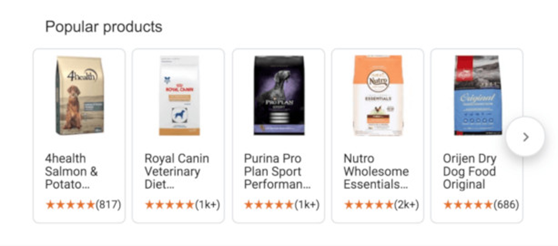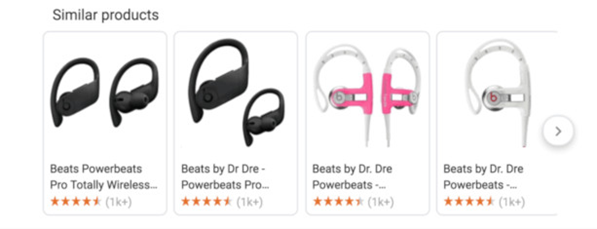Google’s organic carousel presents new opportunities to British retailers. But how do you optimise for this new product? DAC’s Nyo Logan reveals all.
Keeping up with changes to Google’s fast-evolving algorithm (or failing to) can be the difference between success and failure for online retailers in today’s digital-first world. One of the search giant’s latest innovations, the organic carousel, will present new challenges and opportunities to British ecommerce brands in 2020. But how should retailers take steps to optimise for this new product and get ahead in the race for brand consideration?
What is an organic carousel?
Trialled in the US in 2019, organic carousels are expected to appear prominently on UK/Global search engine results pages (SERPs) in the near future. Designed to create a prominent “shop window” effect, they are set to become a vital way consumers will choose between competing products.

Of course, Google favours paid methods of advertising, so it is worth noting that this method is a completely free feature (for now!). Crucially, it means retailers can have their product feed appear organically in SERPS for a variety of search queries.
Getting it right can create a multiplier effect as it will appear in both branded searches and any searches where the product may be relevant to the user’s query. So, a retailer’s products could land on various new touchpoints and be showcased to users without any additional effort or paid advertising.
Searches that will trigger carousels
There are three new sections that will be added organically to some Google search queries:
- Popular products
- Best products
- Similar products (to appear even when someone makes a brand-name search)
For example, if a user searches for “wireless headphones”, they may be shown a product carousel at the top of the SERP featuring various popular brands along with reviews. Clicking on any of these carousel items will take the user to the product ‘Knowledge Panel’ before linking to a website.

The upshot is that anyone who sells a product that appears can be included both in the carousel and potentially added to a price-comparison grid on the product Knowledge Panel. This brand reinforcement will all occur before anyone even gets to a page, boosting the chances of someone become a converting customer.
The inverse of this is that any website failing to provide a product feed to Google will not be included in these grids and therefore may well lose out as a brand under consideration for the product.
How do I get my products featured?
In order to be eligible in these organic product carousels, there are three things that a business must do:
- Firstly, make sure your product schema markup is validated
- Submit your product feed to Google via Merchant Center
- Finally, create an additional feed via Manufacturer Center
In an online world with multiple touchpoints—and consumers that are more likely to convert the more they have encountered your brand—savvy retailers need to take every opportunity to connect with their potential customers. The opportunity to appear in several places at once, which is the most compelling promise of the organic carousel, shouldn’t be ignored. While this feature appears organically rather than as an advertisement, retailers should take advantage of this free promotional space.
By Nyo Logan
SEO Manager for local Digital Performance Marketing Agency DAC

